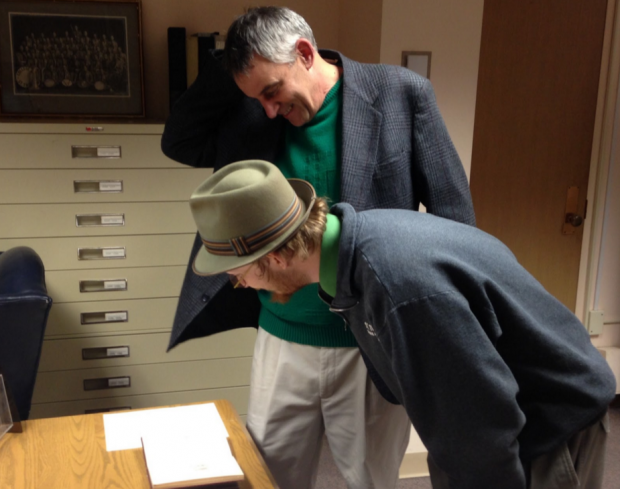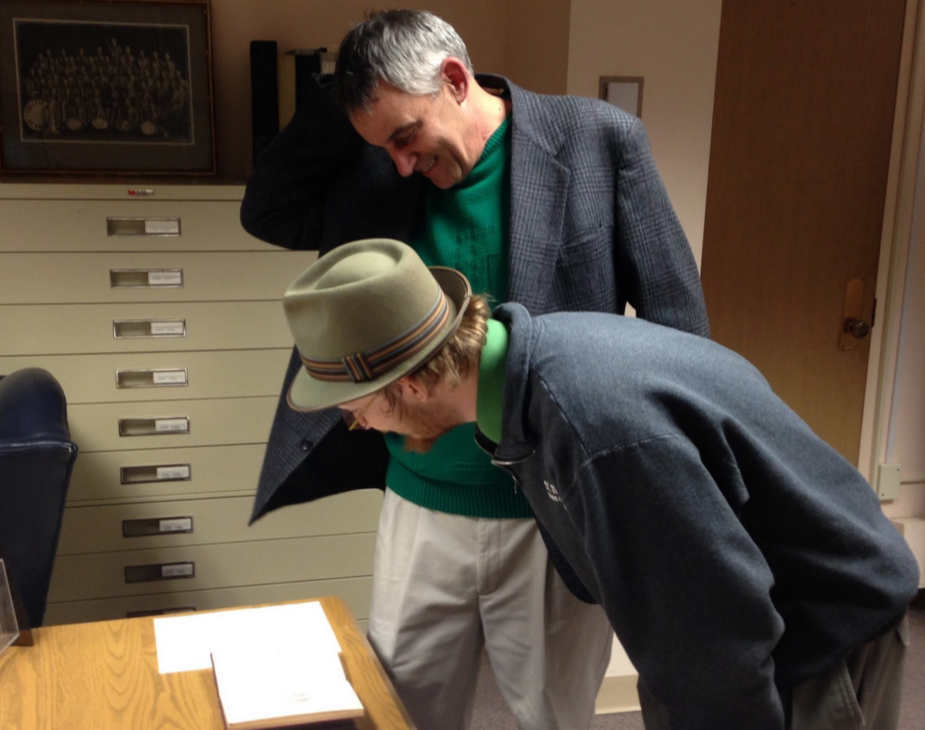
St. Paul, a city full of Irish pubs, is also home to another piece of Irish culture — rare Irish literature. At a university that branched from strong Irish roots, the number of volumes found in the Celtic Collection outnumber the undergraduate population.
The Celtic Collection is the largest component of the O’Shaughnessy-Frey Library Center’s rare and scarce book holdings with approximately 9,600 titles and was displayed March 17th during convo hour at the St. Patrick’s Day Open House event hosted by the Special Collections Department and the Center for Irish Studies.
“I think it’s important for what we do as the Center for Irish Studies and here at the University to provide a little bit of a counter note to the Green Blizzard that is St. Patrick’s Day,” said Center for Irish Studies Director Jim Rogers.
Passion for Ireland was boldly stated with green shamrock cookies, Irish greetings and a bounty of green apparel. During the event the Celtic Collection was displayed for all to admire. Rogers led the event, Dr. Brady of the theology department read the annual St. Patrick’s Day message, Head of Special Collections Ann Kenne introduced the collection, and readings of Irish poetry flowed through the room. Typically the poems are thematic. This year the theme was spring, fitting for Minnesota’s moody weather.
“Irish people are proud of their poets. They are proud of being a nation of poets,” Rogers said. “In Ireland poets are on the postage stamps, and fragments of Irish poetry were woven into the upholstery of the Irish National Airlines, so they are proud of their poets,” said Rogers.
St. Thomas junior Blake Johnson did one of the poetry readings.
“Jim Rogers asked me to read a poem. I did that last year, and it was a good time,” Johnson said.
Though the program was short, it called attention to the treasure that is the Celtic Collection and the holiday that is St. Patrick’s Day.
“It’s really important to me. There is nothing else like St. Patrick’s Day in American life. An ethnic holiday that has been adopted by the nation at large,” Rogers said. “I am always proud of Irish connections. I have worked hard throughout my life to work for a serious and intelligent understanding and appreciation of Ireland.”
The Celtic Collection is consulted by both scholars and undergraduates.
“It is always interesting when I have students form the Irish Studies come because they are always amazed with the collection we have,” Kenne said. “We get a lot of requests from people outside of the university asking for articles that were published and scholarly journals.”
Johnson, a history major, plans on applying information found in the Celtic Collection to this education accomplishments during this final semester at St. Thomas.
“My capstone project is going to be on Ireland, so it’s going to be fun to see if I can find information that’s going to be useful to me,” Johnson said.
St. Thomas has made giant strides since its founding years, but the passion for education still remains in the core values of the university.
Irish-born Archbishop John Ireland founded St. Thomas with a vision.
“The Irish Catholics in general were discriminated against in the Twin Cities. That’s one of the reasons why Archbishop Ireland wanted to open the college. It provided a place for Catholic men at the time to be trained in areas like business so they could go out and do good in the community,” said Kenne.
For many decades, the university also existed partially to help the children of immigrants and their grandchildren.
“That’s a very honorable thing that the Catholic higher education did in this country. They really helped to move the children of the immigrants and the immigrant generations into higher education. St. Thomas was no exception to that,” said Rogers.
Glimpses of Irish heritage can still be seen on the campus today. In fact the very ground on which St. Thomas is located was a farm given to Archbishop Ireland as a gift, from Irish immigrant William Finn. Irish names also encompass the university. Fourteen out of the last 15 Presidents have had Irish names, and the names of the buildings around St. Thomas are predominantly Irish.
People are very proud of their Irish heritage, and St. Thomas has a way of keeping that pride alive.
“I like to think that the Center for Irish Studies is a full flowering of what was being built on years before,” Rogers said. “It’s important for us to sound that Irish note. We like to be the Irish voice in the humanities, and I think we are doing it.”
Carolyn Meyer can be reached at cameyer@stthomas.edu.



